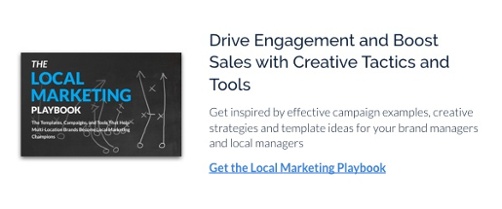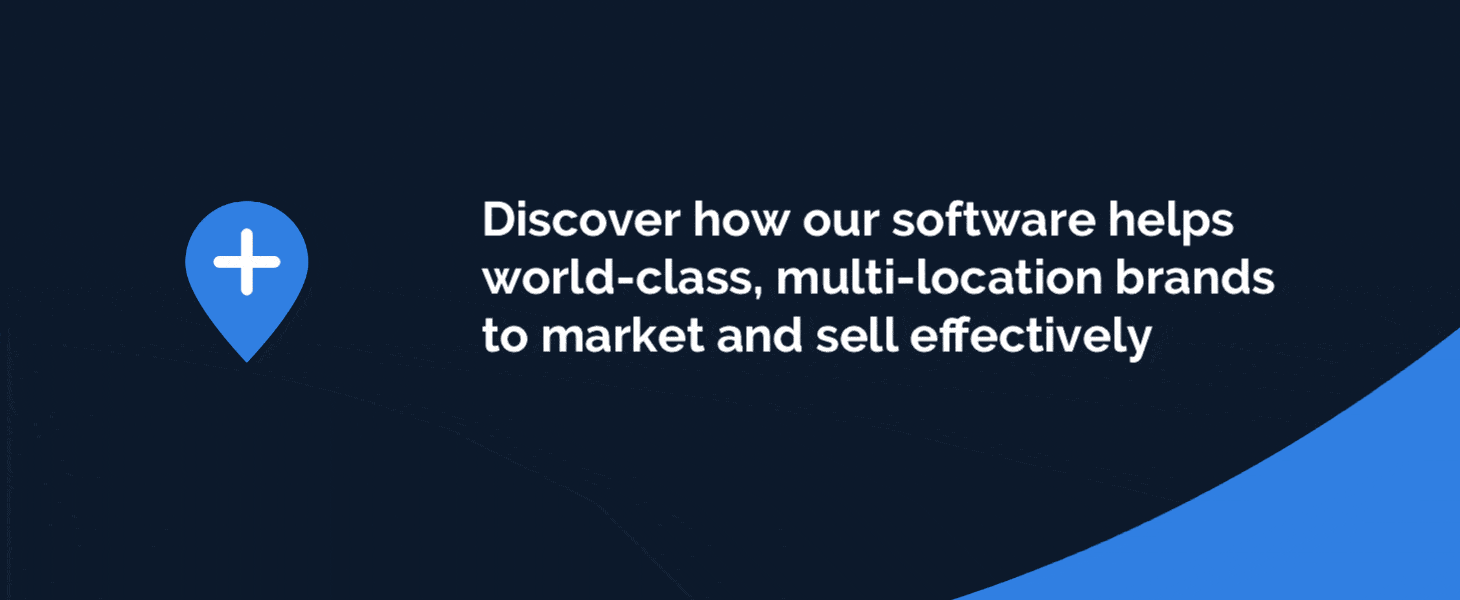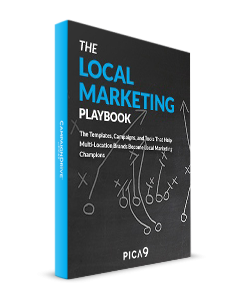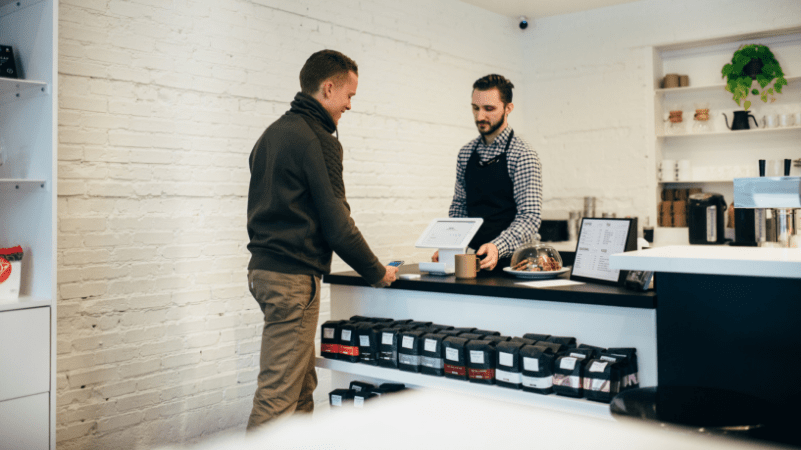What is Brand-to-Local Marketing?
Brand-to-local marketing is an emerging discipline in multi-location enterprises, in which brand-approved marketing assets (images, templates, content, logos, etc.) are deployed to local marketing affiliates through a permission-based set of tools and interfaces. Brand-to-local execution requires technology platforms that are highly scalable, and at the same time highly intuitive, as they are designed to empower users who have little or no training in the classic disciplines of marketing to produce polished, brand compliant marketing materials.
The Benefits of Doing Brand-to-Local Right.
- Even as digital commerce gathers momentum, most brands depend on traditional partnerships with local distributors, retailers, franchisees, or dealers. According to the experts at Forrester Research, more than 70% of commerce worldwide still courses through these channels. Getting brand-to-local right improves your ability to compete in a channel-oriented world.
- Whether they are franchisees, dealers, or salespeople, local marketers are more likely to give premium thought about and priority for brands that share complete, high-quality product content and provide more flexible and efficient access to those resources. When you make your brand easier to activate and deploy at the local level, you’ll end up with a greater share of voice—which is the first step toward greater share of market.
- The third benefit of proper brand-to-local execution is better insight into local marketing activity. For decades, brands have suffered from a blind-spot at the local level, lacking the ability to see what their local partners are doing to grow their businesses, and what the effect of those efforts might be. With a mature implementation of a brand-to-local strategy, you can gain greater awareness of what’s attracting interest at the local level. You can also assess the impact and popularity of brand assets, to help guide creative thinking at your in-house agency or external creative partners.
- The more you can see, the faster you can react to changing market conditions at the local level. This marketing agility can help your local marketing partners to fend off competitive threats or to take hold of emerging opportunities. That effect isn’t limited to digital commerce alone. There are many examples of brands that were able to field traditional marketing campaigns on extremely short notice because they were listening closely to the needs and behaviors of their local marketers and were ready to adapt when the opportunity arose. In many ways, one of the great advantages of a strong brand is this kind of visibility. But you need a good brand-to-local culture to make the most of that value.
- Greater control over the look, feel, and voice of the brand is yet another advantage of optimized brand-to-local marketing. Brand management experts have preached the vital importance of brand consistency for decades. Local marketers don’t disagree with this point, but they need consistency to come without the cost of bureaucratic approval procedures, or time-wasting workflows. The brand has to operate at the speed of the local business, and proper brand-to-local execution makes that possible.
- The finance and procurement teams will love the benefits of mature brand-to-local operations too. First, because it means local marketers will be able to move into self-service mode, reducing the burden of mechanical version requests on in-house agency staff and external marketing agencies. Second, optimized brand-to-local execution will allow the brand to concentrate its efforts (and dollars) on high-return creative and strategic thinking. Third, when a brand-to-local ecosystem has evolved, you’ll find great opportunities to negotiate favored-pricing relationships with all kinds of production vendors (print, digital, social, and email alike), in return for the opportunity for vendors to be a part of your community. And finally, your brand-to-local platform is the perfect place to inject AI-driven efficiency into your creative operations—without exposing sensitive data or running the risks imposed by pesky AI hallucinations.
- Finally, the long-term benefit of mature brand-to-local execution is increased loyalty among key local marketing partners. When you make access to brand assets efficient, easy, and dynamic for your local marketing partners, you’ll make your relationship the fastest path to success. That reduces channel churn in ways that will produce compounding dividends for years, even decades to come.
Barriers to Effective Brand-to-Local Marketing
With all the benefits that effective brand-to-local marketing offers, you might think it would be a top priority for all multi-location organizations. So why would the experts at Forrester estimate that close to 50% of all multi-location enterprises are still laboring with immature brand-to-local infrastructures? Over the past 20 years, we’ve found that there are four barriers to proper brand-to-local implementations.- Resistance from long-time partners to a self-service model. Many brands have large numbers of longstanding partners at the local level who have come to depend on corporate resources to execute marketing activities on their behalf. These influential local partners may resist a self-service approach to local marketing, operating under the assumption that a burden is being shifted to them.
To combat this kind of resistance, leading brands are learning how to blend “self-service”, “assisted service” and “full-service” modes of operation. It’s important to keep these different modes in mind when setting up a brand-to-local platform. - Resistance from internal creative staff to greater local customizability. This is a phenomenon that often occurs in companies with very strong/longstanding brand cultures. It’s easy to see why: creative and production personnel who have built up a strong brand are often reluctant to relinquish the control they have exercised for years, for fear that, in the hands of inexperienced practitioners, the brand may well begin to erode.
There are three points to emphasize when faced with this (often quite reasonable) concern.- First, remind the brand stewards on your team that all the most reliable evidence from marketing experts tells us that brands today are becoming more malleable, and more customer-driven. Hence, being open to more rapid evolution is actually in the interests of the brand, up to a point.
- Second, make sure that you make brand compliance and brand consistency a central part of your brand-to-local implementation. This could be done through the implementation of strict approval loops and highly constrained user roles/permissions. But as you provide this reassurance, be sure at the same time to remind brand stewards that the brand-to-local system needs to remain the path of greatest ease when it comes to local marketing; otherwise, your local partners will be tempted to “go rogue.”
- Finally, make your brand stewards active and engaged participants in the brand-to-local implementation process. Ask them to help you define the rules for customizing brand assets, and to provide the rationale for those rules. Take care to give this collaboration a little bit more time than you might at first think necessary. Experience shows that creative teams sometimes need some orientation to the content management and technical aspects of brand-to-local programs—again, because they often start with a natural wariness about self-service design and production solutions. Don’t be discouraged if this process takes some time; the investment will pay off handsomely when your collaboration with creative leaders is open and productive.
- User Adoption Can Be Uneven At First: According to a recent survey by a prominent industry analyst, enterprises of all sizes struggle with user adoption of enterprise content management systems—a category that encompasses brand-to-local platforms. To overcome these challenges, remember the following:
- Find your power users and engage them early. You will find these folks both within your in-house agency and at external agency partners. You’ll also find them in the field, at high-volume partner locations. Involve these power users in your discussions about library structure and other key details of system setup. Their insights and preferences will be invaluable in making the system a hit with the larger user community.
- Market the system to your users energetically, and formally. Treat the launch of your brand-to-local system the way you would treat a new product launch. Let your user community know that the system is coming and explain its benefits. Schedule training sessions, and make recordings of those sessions available for any partners who might miss the live sessions. And follow up in the early months on customer support tickets, to fine-tune and polish the system based on real-world usage.
- Balance the need for brand control and authority with user needs for fast and easy access to important marketing assets and materials. Getting just the right balance of flexibility and governance is perhaps the number one predictor of success for brand-to-local systems. Watch your usage reports in the early months on a daily basis, and don’t be afraid to get on the phone with users to figure out how you can improve. Most especially, look for registered users who haven’t engaged with the system and reach out proactively to find out why.
- Integration Complexity: According to the experts at Martech Today, the number one challenge for CMOs today is the “inability to successfully integrate disparate technologies into a unified platform.” For multi-location brands, this challenge can be even more daunting, as they need to work across dozens, hundreds, or even thousands of marketing partners.
To minimize the integration problem, these kinds of enterprises need to find a platform that provides all the critical brand-to-local capabilities in a single, easy-to-manage solution. That includes:- A well-defined service for importing user and location information: Make sure that you can pre-populate templates with user and/or location information from an enterprise data source, using a proven, “out of the box” API. If a vendor offers to build a custom connection for this kind of content, be sure to probe to see how big a project the customization would be. Advanced brand-to-local platforms make this easy and inexpensive.
- An on-board management system for creative content. Be sure that your system gives you the ability to curate brand-approved headlines, copy, and legal content, together with brand-approved images, to provide a simple “pick-and-mix” experience for your local marketing partners.
- A highly configurable DAM: The heart of every brand-to-local platform should be a full-featured and enterprise-worthy digital asset management capability. This includes the ability to (a) mix dynamic templates and static brand-approved assets; (b) define your own folder structure and access rules; (c) develop your own metadata (tag) vocabulary to make the search process easy and intuitive for your users.
- A multi-channel templating engine: This should include both traditional (print and PDF) and digital media types, including email, digital display (static and animated), and HTML landing pages. Take time to investigate the process of installing templates to make sure that it’s compatible with your existing creative-production process (usually based on InDesign)
- A flexible approval system: To make your brand-to-local system as efficient and nimble as possible for users and administrators alike, you’ll need the ability to turn approval processes on and off both at the template level, and for specific users, locations (stores), or location groups.
- Easy connections to downstream fulfillment partners: In many brand-to-local environments, it’s really important to offer easy ways for local marketers to produce the materials they have customized or downloaded. That means offering integrated access to printers or libraries of branded merchandise, with the option for either credit-card purchasing or “on-account” purchasing. Be sure to check the platform for these capabilities, as they can be difficult to “bolt on” if they aren’t integrated already.
- Easy to read (and export!) reporting data: Gaining visibility into local activity depends on fast, simple reporting on the usage of assets. You’ll want your brand-to-local platform to offer easy ways to see which templates and assets are most popular, and which users and locations are most active.
3 Great Examples of Brand-to-Local Execution For Global Brands
Take a look at some of the examples below to get a more concrete sense of the business impact that a mature brand-to-local strategy can bring to your enterprise:
CampaignDrive Powers Brand-to-Local Marketing Success For Distributed Brands
CampaignDrive by Pica9 is brand-to-local marketing platform that enables local channels to launch impactful, brand compliant local marketing campaigns in minutes. Speak with a local marketing expert today to see how a tool like CampaignDrive can help your distributed organization achieve local marketing success.






